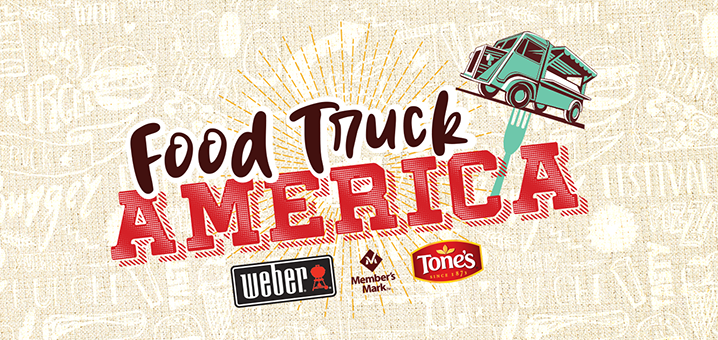ST. LOUIS, MO – As food trucks proliferate, tension builds between mobile vendors and immovable eateries.
At first glance the map of permissible vending locations that the City of St. Louis provides to newly licensed food trucks looks like the damage report from a London Blitz-style air strike downtown. A red dot marks the entrance of every brick-and-mortar restaurant, and a pale blue circle surrounds each dot, marking a 200-foot radius within which food trucks aren’t allowed to park. The map covers nearly all of downtown, bounded by Interstate 70/55 to the east, 18th Street to the west, Cole Street to the north and Chouteau Avenue to the south. In the heart of downtown, where most office workers are concentrated and, consequently, where food-truck operators most want to be, those pale blue circles overlap again and again, forming an almost-contiguous quilt of off-limits real estate.
Yet even in the densest blue clusters, the map reveals splotches of space open to food trucks. Prime locations, such as the intersection of Eighth and Pine streets and Market Street at Broadway, are marked with a blue star, designating them as “recommended” spots for food trucks.
But real life seldom approaches the perfection of circles and stars, and there has been friction between mobile vendors and rooted restaurants almost from the get-go. As the number of trucks continues to multiply — totaling nearly two dozen at last count, serving everything from fish tacos to Korean tacos to gyros to wood-fired pizzas to “deconstructed” sushi rolls — so does the likelihood that some interested party is being rubbed the wrong way.
Around Christmastime the bickering boiled over onto Twitter, when a restaurateur called police complaining that a food-truck operator had parked right outside his establishment on Broadway. The interloper was sent packing, prompting apocalyptic tweets from fellow vendors that their kind was “no longer welcome” at the popular confluence of Broadway and Pine Street nearby. (For more about the dustup, see the RFT‘s December 29, 2011, “Short Orders” column.)
The City of St. Louis and the rest of the metro area have been playing catch-up to varying degrees since the food-truck boom began.
The city opted to cover the trucks under an existing vending ordinance that had been created to regulate hot-dog carts and the like, including the ad hoc cadre of hawkers who pop up like mushrooms when the baseball season gets under way.
“Under that ordinance, they cannot be anywhere but downtown in the approved vending zone,” explains Kara Bowlin, press secretary to Mayor Francis Slay. (A “pilot” program calls for a $500 annual permit fee for food trucks, Bowlin says, adding that the city has yet to settle on a yearly rate and noting that some vendors pay as much as $6,000 a year to lay exclusive claim to a spot.) Because the vending ordinance didn’t account for potential conflict between mobile eateries and their brick-and-mortar brethren, the city’s Department of Streets developed the 200-foot rule.
Find the entire article <here>




